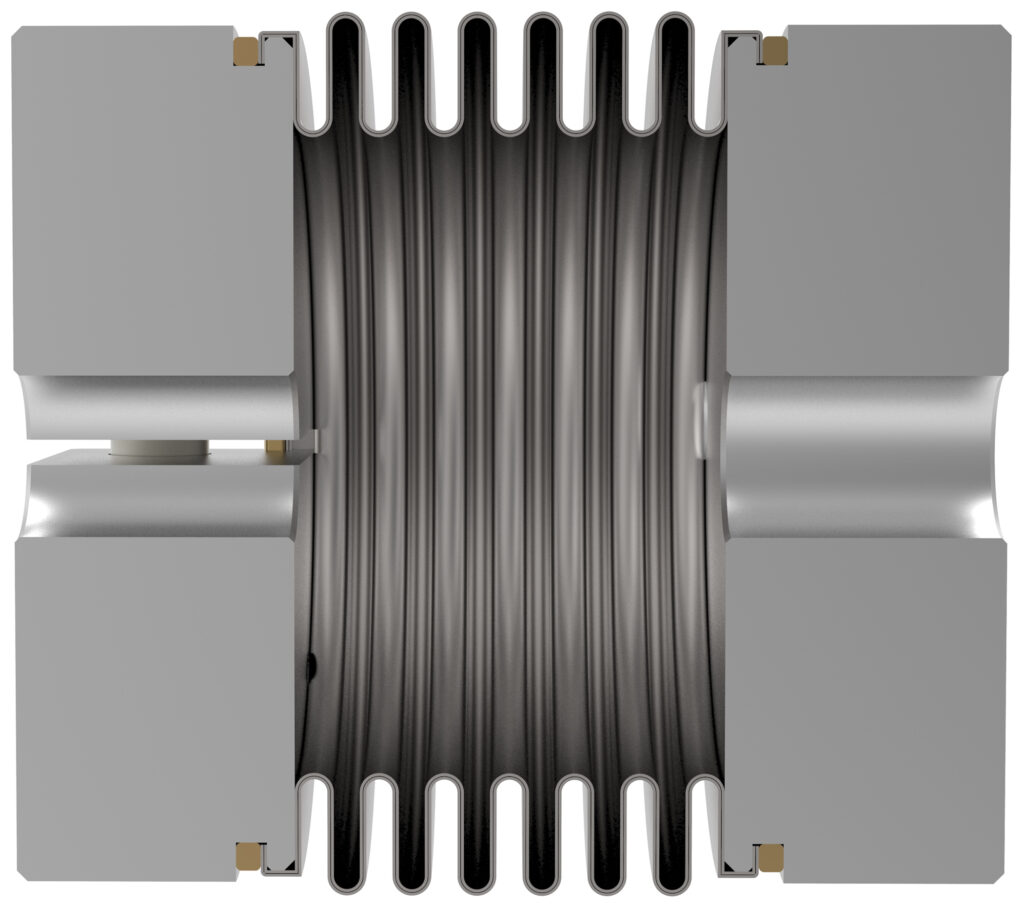What is a bellows coupling?
According to Mike Parzych, Product Marketing Manager for GAM, a bellows coupling is basically a type of coupling design which consists of a thin walled, flexible corrugation (bellows) that is connected between two clamping hubs.
“These types of couplings are traditionally used for servo motion control applications that have high positioning accuracy, speed, and torque requirements,” Parzych explains.
He says that a bellows coupling is unique because of the construction of the bellows. It can flex and compensate for minor shaft misalignments (axial, lateral, radial), while still providing a zero backlash and torsionally rigid connection. “They are a unique blend of rigidity and flexibility.”
How to specify a bellows coupling for specific applications
“To specify a bellows coupling, the first parameters we typically look at are the torque and connecting shaft sizes which will help to give a general sense of the coupling size,” Parzych says. “The nominal torque rating (continuous torque transmission) of the coupling should be greater than the peak torque of the application to ensure a secure connection.”
“The connecting shaft sizes must also be within the acceptable range of the coupling. If the shaft diameter is smaller than the specified range on the coupling, the torque transmission value of the coupling can decrease due to inadequate clamping force between the hub and shaft,” He adds.
“Importantly, when we are working on a project like this, we always check with the customer as to the amount of shaft misalignment present in the application, if known. Axial misalignment occurs during operation when the connecting shafts either advance towards each other which causes compression, or retract apart which causes tension.”
“Radial (also known as angular) misalignment is when there is an angle between the centerlines of the two shafts. Lateral (also known as parallel) misalignment is when the centerlines of the two shafts are on different planes.”
“Each form of misalignment creates stress in the bellows which can eventually lead to distortion and failure. However, if the misalignment values are not exceeded and the operating torque is below the rated torque of the coupling, then an infinite number of cycles without failure is possible.”
“When introduced, bellows couplings were first widely accepted in the Machine Tool industry for spindle drives. Since then usage has expanded to a vast number of industries including Automotive, General Automation & Assembly, Material Handling, Medical, Packaging, Robotics, to name only a few. To know if a bellows coupling assembly is right for your specific application, it is important to do the necessary research on all system variables first to ensure a reliable assembly.
GAM
www.gamweb.com
By Joyce Laird, contributing editor
